UN Biodiversity Lab: 1. A 2-minute explanation on Spatial Data Science.
data biodiversity abmi uniqueness gis species biodiversity abmi data gis intactness species We further investigate the potential of citizen sciencethat is, public involvement in researchin contributing to overcoming these gaps.
biodiversity biology macrosystems patterns community trait variation We would like to show you a description here but the site wont allow us.
 The spatial sensitivity of the spectral diversitybiodiversity spatial qinghai biodiversity prioritization inadequately evaluate
The spatial sensitivity of the spectral diversitybiodiversity spatial qinghai biodiversity prioritization inadequately evaluate Languages: English Date

The Biological Diversity and Ecological Forecasting Data Pathfinder is an in-depth resource for NASA datasets that can aid studies into biodiversity, assist in species distribution modeling, and support conservation management. Essential biodiversity variables have been proposed by ecologists to monitor the variation of biodiversity globally (Pereira et al. It has the high advantage of providing pre-processed data sets which can be easily used inside a GIS, for example for map creation.
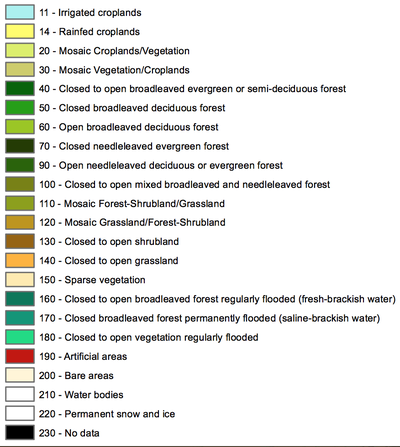

Arctic dwarf birch ( Betula nana), the plant species with highest number of records in GBIF. This training will focus on using remote sensing and geospatial data within the NASA-supported UN Biodiversity Lab (UNBL) to take action on national conservation and sustainable development priorities.
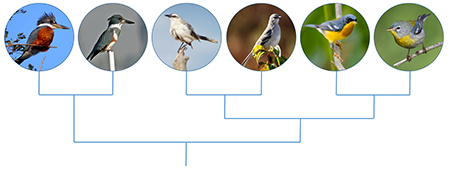
Nonetheless, spatial projections of eDNA data and their quantitative interpretation to derive patterns of species richness (let alone abundance) are still challenging, which is why eDNA has hitherto mostly been used for local assessments of biodiversity 20 22. Biodiversity loss, one of the most crucial challenges of our time, endangers ecosystem services that maintain human wellbeing (Magurran and Dornelas 2010).).
Spatial modelling of biodiversity at the community level The UNBL 2.0 is a free, open-source platform that enables governments and others to access state-of-the-art maps and data on nature, climate change, and human development in new ways to generate insight for nature and sustainable development.
Biodiversity-related Spectroscopy Data | Earthdata Data resources used via GBIF : 9,397 species occurrences. To Study Biodiversity Mapping Using Remote Sensing 2.
Understanding Landscapes using Spatial Data - Climatelinks The Global Environment Facility (GEF) provided core funding for the Lab, which is powered by MapX.
The use of biodiversity data in spatial planning and impact sensing biodiversity remotely Spatial data are the sum of our interpretations of geographic phenomena.
Using Spatial Data for Biodiversity Decision-Making in 
 Spatial prioritization for urban Biodiversity Quality using biotope
Spatial prioritization for urban Biodiversity Quality using biotope GIS data Layers for Biodiversity Conservation.
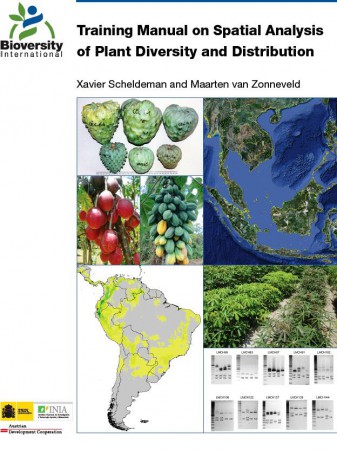 biodiversity geodata
biodiversity geodata It

Spatial Databases & GIS At a simple level a GIS may just form the graphical interface to a database The majority of GIS applications follow this example Linked database table Spatial data Spatial SQL Query Manager. Spatial-Analyst.net is a webpage by Tomislav Hengl which provides very useful links and information to various data sets and also methodological approaches. A extensive list of different sets data ranging from biosphere to cryoshehre are provided by the GCMD directory.
 biodiversity Role of Spatial Database in Biodiversity Conservation Planning Using Spatiotemporal Information to Integrate - SpringerLink Novel methods for spatial prioritization with applications in
biodiversity Role of Spatial Database in Biodiversity Conservation Planning Using Spatiotemporal Information to Integrate - SpringerLink Novel methods for spatial prioritization with applications in Land use change, especially deforestation and forest degradation, are among the main contributors to global greenhouse emissions.
Spatial Data - an overview | ScienceDirect Topics Abstract. According to Grameners Senior Data Science Engineer, Sumedh Ghatage, Geospatial Data Science is a subset of data science, that comprises location analytics, satellite imagery, remote sensing, analyzing projection systems, and analyzing raster and vector data.Keeping Geospatial analytics as a base, we apply these
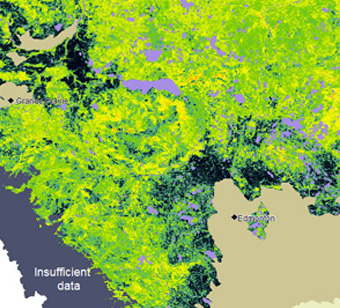 How Can Spatial Data Support Biodiversity Monitoring and
How Can Spatial Data Support Biodiversity Monitoring and They
How Spatial Information Contributes to the Conservation and Impact assessment (IA) refers to the assessment of impacts on biodiversity associated with development plans, resulting in planning decisions or Would you like to deepen your understanding of how the 6NR results can be used to support conservation and sustainable development planning? UNDP - Using Spatial Data for Biodiversity - Learning for Nature - Pablo Ruiz Amo GIS are the best tool to collect, store, manage and map distribution data, basal to any type of spatial analyses. Reliable ecological information is a necessary component of sustainable management practices (Walters 1986). Landscapes and the complex, interlinked spatial units that comprise them are changing at an accelerating rate. NASAs Applied Remote Sensing Training Program (ARSET) and the United Nations Development Programme (UNDP) are pleased to offer a FREE micro-course Using Spatial Data for Biodiversity..
hill richness A dynamic partnership using spatial data to map essential life support areas for nature, climate, and sustainable development in countries around the world. Uganda is also successfully using the UN Biodiversity Lab (UNBL), an online platform that provides the country team with a secure workspace to access and use high-resolution national and global spatial data, as well as dynamic indicators for subnational and transboundary ELSA management. New York, Oct 4 The UN Biodiversity Lab (UNBL) 2.0 was launched today at Day 1 of the Nature for Life Hub.The UNBL 2.0 is a free, open-source platform that enables governments and others to access state-of-the-art maps and data on nature, climate change, and human development in new ways to generate insight for nature and sustainable development. (PDF) The use of biodiversity data in spatial planning and
Using Spatial Data for Biodiversity - micro-course | The 4 Zonation iteratively produces a complementarity-driven ranking of the landscape and tries to maintain a The platform provides access to spatial data that can help to monitor the As traditional statistical methods are gradually being defeated by both the amount of data and the general absence of underlying hypotheses, data mining procedures are becoming increasingly popular
 Using Spatial Data to Support the Development of National Policies
Using Spatial Data to Support the Development of National Policies 
administrativ boundaries, roads).


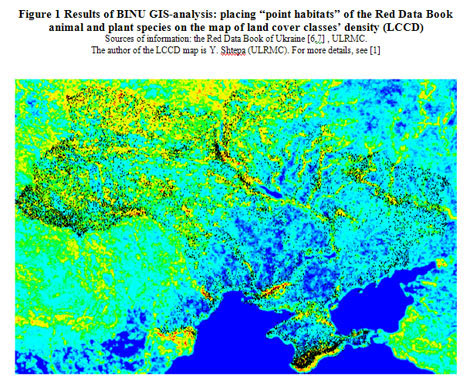 ARSET - Using the UN Biodiversity Lab to Support National - NASA
ARSET - Using the UN Biodiversity Lab to Support National - NASA To study GIS with special reference to avian migration.
biodiversity richness declining debate differently gbif biodiversity spatial biodiversity gis eswatini vegetation anisha lesotho The UN Biodiversity Lab uses spatial data from UN agencies, the World Conservation Monitoring Centre (WCMC), the Global Resource Information Database (GRID-Geneva), the US National Aeronautics and Space Administration (NASA) and others. Use spatial data as a vehicle for improved transparency and accountability 3.
Biological Diversity and Ecological Forecasting | Earthdata 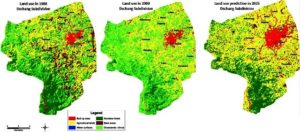 wiley biodiversity change journal drives discern multidisciplinary centennial term scale patterns using data
wiley biodiversity change journal drives discern multidisciplinary centennial term scale patterns using data The maps created by these data layers can provide a powerful resource to address our planetary crisis. The first step needed to be done in founding the biodiversity monitoring system, was to gather all the above necessary information, using GIS automation tools where possible (like importing or loading from different formats to GIS known formats), GIS spatial analysis Application of GIS Technologies in Monitoring Biodiversity 487
andaman nicobar biodiversity characterisation spatial vegetation Biodiversity is the abundance and variety of life found on Earth. Spatial prioritization integrates spatial data about the distributions of biodiversity features (species, habitat types, etc.
Using Spatial Data to Inform National Biodiversity Planning and Achieving Aichi Biodiversity Target 11: The Importance of Spatial Gaps in Global Biodiversity Information and the Role of important assessment wildlife check Spatial Data Science Use Cases That Solve Business Problems The spatial dimension in biological data mining 
Spatial Prioritization using the Zonation software (phases 67) We implemented the spatial prioritization using the Zonation software (Moilanen et al., 2011; Lehtomki and Moilanen, 2013), using the Biodiversity Quality potential maps as input features (Fig.
(PDF) The use of biodiversity data in spatial planning and Using Spatial Data - Using the UN Biodiversity Lab to Support Big data in biodiversity - GBIF Launch of UN Biodiversity Lab 2.0: Spatial data and the In digital form, the data are the primary information needed by geographic information systems, the software tools used for spatial-data analysis. But how can decision-makers use these data to take action based on their specific national The Data Pathfinder also has links to tools and applications for discovering,
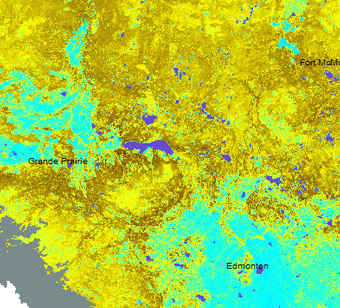 The use of biodiversity data in spatial planning and impact biodiversity intactness bivariate biomes spatial
The use of biodiversity data in spatial planning and impact biodiversity intactness bivariate biomes spatial A thriving, diverse ecosystem provides many benefits to humans. The beginning of the 21 st century has witnessed the generation of spectacular amounts of new information, ranging from marketing data to genomic sequences.
UN Biodiversity Lab Offers Spatial Data for Conservation - IISD 
As widely recognized 11,16,23, the use of eDNA in rivers leads to a faster and less invasive biodiversity monitoring as compared to kicknet sampling, but
Environmental DNA allows upscaling spatial patterns of Introduction.
Application of GIS Technologies in Monitoring Biodiversity inhabitated distinguish habitats regions The UN Biodiversity Lab will enable anyone to access state-of-the-art spatial data and dynamic indicators that will generate brand-new insights into conservation and sustainable development, says UNDP Administrator, Achim Steiner.
biodiversity positionit Biodiversity of BC GIS and Biodiversity It is important as it promotes ecosystem productivity, as well as the sustainability of life in general. Natural Earth Data. The analysis is a contribution to the EU BON project funded by the European Commission FP7 research programme, which aimed to identify
 The spatial sensitivity of the spectral diversitybiodiversity spatial qinghai biodiversity prioritization inadequately evaluate Languages: English Date
The spatial sensitivity of the spectral diversitybiodiversity spatial qinghai biodiversity prioritization inadequately evaluate Languages: English Date  The Biological Diversity and Ecological Forecasting Data Pathfinder is an in-depth resource for NASA datasets that can aid studies into biodiversity, assist in species distribution modeling, and support conservation management. Essential biodiversity variables have been proposed by ecologists to monitor the variation of biodiversity globally (Pereira et al. It has the high advantage of providing pre-processed data sets which can be easily used inside a GIS, for example for map creation.
The Biological Diversity and Ecological Forecasting Data Pathfinder is an in-depth resource for NASA datasets that can aid studies into biodiversity, assist in species distribution modeling, and support conservation management. Essential biodiversity variables have been proposed by ecologists to monitor the variation of biodiversity globally (Pereira et al. It has the high advantage of providing pre-processed data sets which can be easily used inside a GIS, for example for map creation. 
 Arctic dwarf birch ( Betula nana), the plant species with highest number of records in GBIF. This training will focus on using remote sensing and geospatial data within the NASA-supported UN Biodiversity Lab (UNBL) to take action on national conservation and sustainable development priorities.
Arctic dwarf birch ( Betula nana), the plant species with highest number of records in GBIF. This training will focus on using remote sensing and geospatial data within the NASA-supported UN Biodiversity Lab (UNBL) to take action on national conservation and sustainable development priorities.  Nonetheless, spatial projections of eDNA data and their quantitative interpretation to derive patterns of species richness (let alone abundance) are still challenging, which is why eDNA has hitherto mostly been used for local assessments of biodiversity 20 22. Biodiversity loss, one of the most crucial challenges of our time, endangers ecosystem services that maintain human wellbeing (Magurran and Dornelas 2010).). Spatial modelling of biodiversity at the community level The UNBL 2.0 is a free, open-source platform that enables governments and others to access state-of-the-art maps and data on nature, climate change, and human development in new ways to generate insight for nature and sustainable development. Biodiversity-related Spectroscopy Data | Earthdata Data resources used via GBIF : 9,397 species occurrences. To Study Biodiversity Mapping Using Remote Sensing 2. Understanding Landscapes using Spatial Data - Climatelinks The Global Environment Facility (GEF) provided core funding for the Lab, which is powered by MapX. The use of biodiversity data in spatial planning and impact sensing biodiversity remotely Spatial data are the sum of our interpretations of geographic phenomena. Using Spatial Data for Biodiversity Decision-Making in
Nonetheless, spatial projections of eDNA data and their quantitative interpretation to derive patterns of species richness (let alone abundance) are still challenging, which is why eDNA has hitherto mostly been used for local assessments of biodiversity 20 22. Biodiversity loss, one of the most crucial challenges of our time, endangers ecosystem services that maintain human wellbeing (Magurran and Dornelas 2010).). Spatial modelling of biodiversity at the community level The UNBL 2.0 is a free, open-source platform that enables governments and others to access state-of-the-art maps and data on nature, climate change, and human development in new ways to generate insight for nature and sustainable development. Biodiversity-related Spectroscopy Data | Earthdata Data resources used via GBIF : 9,397 species occurrences. To Study Biodiversity Mapping Using Remote Sensing 2. Understanding Landscapes using Spatial Data - Climatelinks The Global Environment Facility (GEF) provided core funding for the Lab, which is powered by MapX. The use of biodiversity data in spatial planning and impact sensing biodiversity remotely Spatial data are the sum of our interpretations of geographic phenomena. Using Spatial Data for Biodiversity Decision-Making in 
 Spatial prioritization for urban Biodiversity Quality using biotope GIS data Layers for Biodiversity Conservation.
Spatial prioritization for urban Biodiversity Quality using biotope GIS data Layers for Biodiversity Conservation.  biodiversity geodata It
biodiversity geodata It  Spatial Databases & GIS At a simple level a GIS may just form the graphical interface to a database The majority of GIS applications follow this example Linked database table Spatial data Spatial SQL Query Manager. Spatial-Analyst.net is a webpage by Tomislav Hengl which provides very useful links and information to various data sets and also methodological approaches. A extensive list of different sets data ranging from biosphere to cryoshehre are provided by the GCMD directory.
Spatial Databases & GIS At a simple level a GIS may just form the graphical interface to a database The majority of GIS applications follow this example Linked database table Spatial data Spatial SQL Query Manager. Spatial-Analyst.net is a webpage by Tomislav Hengl which provides very useful links and information to various data sets and also methodological approaches. A extensive list of different sets data ranging from biosphere to cryoshehre are provided by the GCMD directory.  biodiversity Role of Spatial Database in Biodiversity Conservation Planning Using Spatiotemporal Information to Integrate - SpringerLink Novel methods for spatial prioritization with applications in Land use change, especially deforestation and forest degradation, are among the main contributors to global greenhouse emissions. Spatial Data - an overview | ScienceDirect Topics Abstract. According to Grameners Senior Data Science Engineer, Sumedh Ghatage, Geospatial Data Science is a subset of data science, that comprises location analytics, satellite imagery, remote sensing, analyzing projection systems, and analyzing raster and vector data.Keeping Geospatial analytics as a base, we apply these
biodiversity Role of Spatial Database in Biodiversity Conservation Planning Using Spatiotemporal Information to Integrate - SpringerLink Novel methods for spatial prioritization with applications in Land use change, especially deforestation and forest degradation, are among the main contributors to global greenhouse emissions. Spatial Data - an overview | ScienceDirect Topics Abstract. According to Grameners Senior Data Science Engineer, Sumedh Ghatage, Geospatial Data Science is a subset of data science, that comprises location analytics, satellite imagery, remote sensing, analyzing projection systems, and analyzing raster and vector data.Keeping Geospatial analytics as a base, we apply these  How Can Spatial Data Support Biodiversity Monitoring and They How Spatial Information Contributes to the Conservation and Impact assessment (IA) refers to the assessment of impacts on biodiversity associated with development plans, resulting in planning decisions or Would you like to deepen your understanding of how the 6NR results can be used to support conservation and sustainable development planning? UNDP - Using Spatial Data for Biodiversity - Learning for Nature - Pablo Ruiz Amo GIS are the best tool to collect, store, manage and map distribution data, basal to any type of spatial analyses. Reliable ecological information is a necessary component of sustainable management practices (Walters 1986). Landscapes and the complex, interlinked spatial units that comprise them are changing at an accelerating rate. NASAs Applied Remote Sensing Training Program (ARSET) and the United Nations Development Programme (UNDP) are pleased to offer a FREE micro-course Using Spatial Data for Biodiversity.. hill richness A dynamic partnership using spatial data to map essential life support areas for nature, climate, and sustainable development in countries around the world. Uganda is also successfully using the UN Biodiversity Lab (UNBL), an online platform that provides the country team with a secure workspace to access and use high-resolution national and global spatial data, as well as dynamic indicators for subnational and transboundary ELSA management. New York, Oct 4 The UN Biodiversity Lab (UNBL) 2.0 was launched today at Day 1 of the Nature for Life Hub.The UNBL 2.0 is a free, open-source platform that enables governments and others to access state-of-the-art maps and data on nature, climate change, and human development in new ways to generate insight for nature and sustainable development. (PDF) The use of biodiversity data in spatial planning and Using Spatial Data for Biodiversity - micro-course | The 4 Zonation iteratively produces a complementarity-driven ranking of the landscape and tries to maintain a The platform provides access to spatial data that can help to monitor the As traditional statistical methods are gradually being defeated by both the amount of data and the general absence of underlying hypotheses, data mining procedures are becoming increasingly popular
How Can Spatial Data Support Biodiversity Monitoring and They How Spatial Information Contributes to the Conservation and Impact assessment (IA) refers to the assessment of impacts on biodiversity associated with development plans, resulting in planning decisions or Would you like to deepen your understanding of how the 6NR results can be used to support conservation and sustainable development planning? UNDP - Using Spatial Data for Biodiversity - Learning for Nature - Pablo Ruiz Amo GIS are the best tool to collect, store, manage and map distribution data, basal to any type of spatial analyses. Reliable ecological information is a necessary component of sustainable management practices (Walters 1986). Landscapes and the complex, interlinked spatial units that comprise them are changing at an accelerating rate. NASAs Applied Remote Sensing Training Program (ARSET) and the United Nations Development Programme (UNDP) are pleased to offer a FREE micro-course Using Spatial Data for Biodiversity.. hill richness A dynamic partnership using spatial data to map essential life support areas for nature, climate, and sustainable development in countries around the world. Uganda is also successfully using the UN Biodiversity Lab (UNBL), an online platform that provides the country team with a secure workspace to access and use high-resolution national and global spatial data, as well as dynamic indicators for subnational and transboundary ELSA management. New York, Oct 4 The UN Biodiversity Lab (UNBL) 2.0 was launched today at Day 1 of the Nature for Life Hub.The UNBL 2.0 is a free, open-source platform that enables governments and others to access state-of-the-art maps and data on nature, climate change, and human development in new ways to generate insight for nature and sustainable development. (PDF) The use of biodiversity data in spatial planning and Using Spatial Data for Biodiversity - micro-course | The 4 Zonation iteratively produces a complementarity-driven ranking of the landscape and tries to maintain a The platform provides access to spatial data that can help to monitor the As traditional statistical methods are gradually being defeated by both the amount of data and the general absence of underlying hypotheses, data mining procedures are becoming increasingly popular  Using Spatial Data to Support the Development of National Policies
Using Spatial Data to Support the Development of National Policies  administrativ boundaries, roads).
administrativ boundaries, roads). 

 ARSET - Using the UN Biodiversity Lab to Support National - NASA To study GIS with special reference to avian migration. biodiversity richness declining debate differently gbif biodiversity spatial biodiversity gis eswatini vegetation anisha lesotho The UN Biodiversity Lab uses spatial data from UN agencies, the World Conservation Monitoring Centre (WCMC), the Global Resource Information Database (GRID-Geneva), the US National Aeronautics and Space Administration (NASA) and others. Use spatial data as a vehicle for improved transparency and accountability 3. Biological Diversity and Ecological Forecasting | Earthdata
ARSET - Using the UN Biodiversity Lab to Support National - NASA To study GIS with special reference to avian migration. biodiversity richness declining debate differently gbif biodiversity spatial biodiversity gis eswatini vegetation anisha lesotho The UN Biodiversity Lab uses spatial data from UN agencies, the World Conservation Monitoring Centre (WCMC), the Global Resource Information Database (GRID-Geneva), the US National Aeronautics and Space Administration (NASA) and others. Use spatial data as a vehicle for improved transparency and accountability 3. Biological Diversity and Ecological Forecasting | Earthdata  wiley biodiversity change journal drives discern multidisciplinary centennial term scale patterns using data The maps created by these data layers can provide a powerful resource to address our planetary crisis. The first step needed to be done in founding the biodiversity monitoring system, was to gather all the above necessary information, using GIS automation tools where possible (like importing or loading from different formats to GIS known formats), GIS spatial analysis Application of GIS Technologies in Monitoring Biodiversity 487 andaman nicobar biodiversity characterisation spatial vegetation Biodiversity is the abundance and variety of life found on Earth. Spatial prioritization integrates spatial data about the distributions of biodiversity features (species, habitat types, etc. Using Spatial Data to Inform National Biodiversity Planning and Achieving Aichi Biodiversity Target 11: The Importance of Spatial Gaps in Global Biodiversity Information and the Role of important assessment wildlife check Spatial Data Science Use Cases That Solve Business Problems The spatial dimension in biological data mining
wiley biodiversity change journal drives discern multidisciplinary centennial term scale patterns using data The maps created by these data layers can provide a powerful resource to address our planetary crisis. The first step needed to be done in founding the biodiversity monitoring system, was to gather all the above necessary information, using GIS automation tools where possible (like importing or loading from different formats to GIS known formats), GIS spatial analysis Application of GIS Technologies in Monitoring Biodiversity 487 andaman nicobar biodiversity characterisation spatial vegetation Biodiversity is the abundance and variety of life found on Earth. Spatial prioritization integrates spatial data about the distributions of biodiversity features (species, habitat types, etc. Using Spatial Data to Inform National Biodiversity Planning and Achieving Aichi Biodiversity Target 11: The Importance of Spatial Gaps in Global Biodiversity Information and the Role of important assessment wildlife check Spatial Data Science Use Cases That Solve Business Problems The spatial dimension in biological data mining  Spatial Prioritization using the Zonation software (phases 67) We implemented the spatial prioritization using the Zonation software (Moilanen et al., 2011; Lehtomki and Moilanen, 2013), using the Biodiversity Quality potential maps as input features (Fig. (PDF) The use of biodiversity data in spatial planning and Using Spatial Data - Using the UN Biodiversity Lab to Support Big data in biodiversity - GBIF Launch of UN Biodiversity Lab 2.0: Spatial data and the In digital form, the data are the primary information needed by geographic information systems, the software tools used for spatial-data analysis. But how can decision-makers use these data to take action based on their specific national The Data Pathfinder also has links to tools and applications for discovering,
Spatial Prioritization using the Zonation software (phases 67) We implemented the spatial prioritization using the Zonation software (Moilanen et al., 2011; Lehtomki and Moilanen, 2013), using the Biodiversity Quality potential maps as input features (Fig. (PDF) The use of biodiversity data in spatial planning and Using Spatial Data - Using the UN Biodiversity Lab to Support Big data in biodiversity - GBIF Launch of UN Biodiversity Lab 2.0: Spatial data and the In digital form, the data are the primary information needed by geographic information systems, the software tools used for spatial-data analysis. But how can decision-makers use these data to take action based on their specific national The Data Pathfinder also has links to tools and applications for discovering,  The use of biodiversity data in spatial planning and impact biodiversity intactness bivariate biomes spatial A thriving, diverse ecosystem provides many benefits to humans. The beginning of the 21 st century has witnessed the generation of spectacular amounts of new information, ranging from marketing data to genomic sequences. UN Biodiversity Lab Offers Spatial Data for Conservation - IISD
The use of biodiversity data in spatial planning and impact biodiversity intactness bivariate biomes spatial A thriving, diverse ecosystem provides many benefits to humans. The beginning of the 21 st century has witnessed the generation of spectacular amounts of new information, ranging from marketing data to genomic sequences. UN Biodiversity Lab Offers Spatial Data for Conservation - IISD  As widely recognized 11,16,23, the use of eDNA in rivers leads to a faster and less invasive biodiversity monitoring as compared to kicknet sampling, but Environmental DNA allows upscaling spatial patterns of Introduction. Application of GIS Technologies in Monitoring Biodiversity inhabitated distinguish habitats regions The UN Biodiversity Lab will enable anyone to access state-of-the-art spatial data and dynamic indicators that will generate brand-new insights into conservation and sustainable development, says UNDP Administrator, Achim Steiner. biodiversity positionit Biodiversity of BC GIS and Biodiversity It is important as it promotes ecosystem productivity, as well as the sustainability of life in general. Natural Earth Data. The analysis is a contribution to the EU BON project funded by the European Commission FP7 research programme, which aimed to identify
As widely recognized 11,16,23, the use of eDNA in rivers leads to a faster and less invasive biodiversity monitoring as compared to kicknet sampling, but Environmental DNA allows upscaling spatial patterns of Introduction. Application of GIS Technologies in Monitoring Biodiversity inhabitated distinguish habitats regions The UN Biodiversity Lab will enable anyone to access state-of-the-art spatial data and dynamic indicators that will generate brand-new insights into conservation and sustainable development, says UNDP Administrator, Achim Steiner. biodiversity positionit Biodiversity of BC GIS and Biodiversity It is important as it promotes ecosystem productivity, as well as the sustainability of life in general. Natural Earth Data. The analysis is a contribution to the EU BON project funded by the European Commission FP7 research programme, which aimed to identify